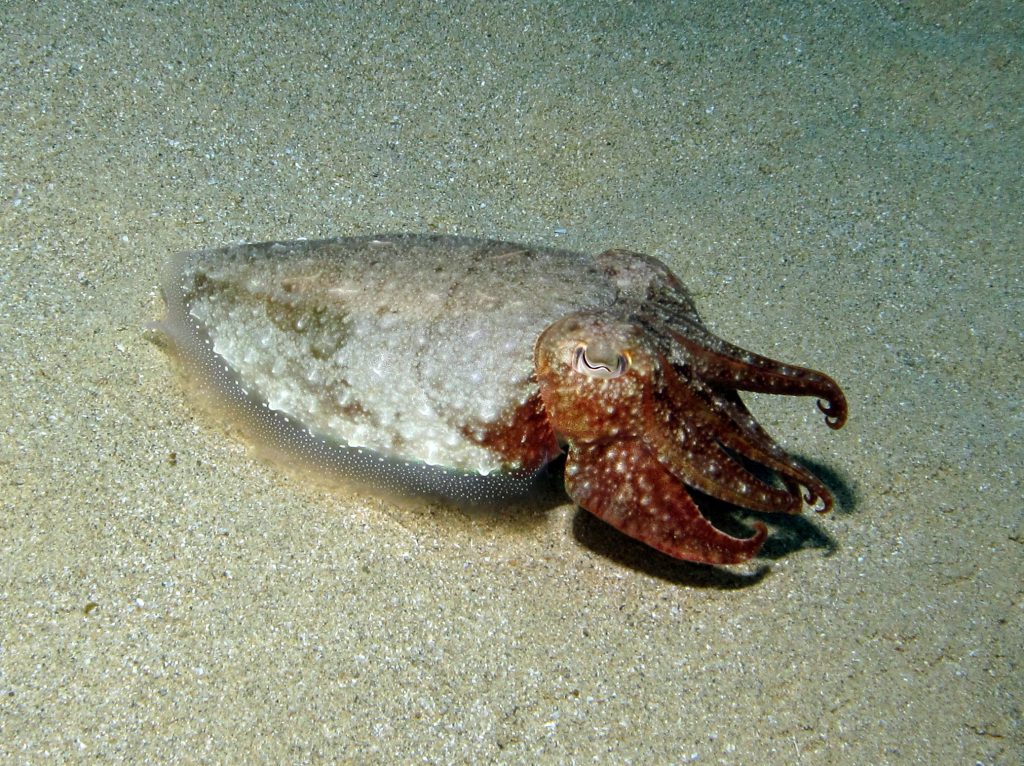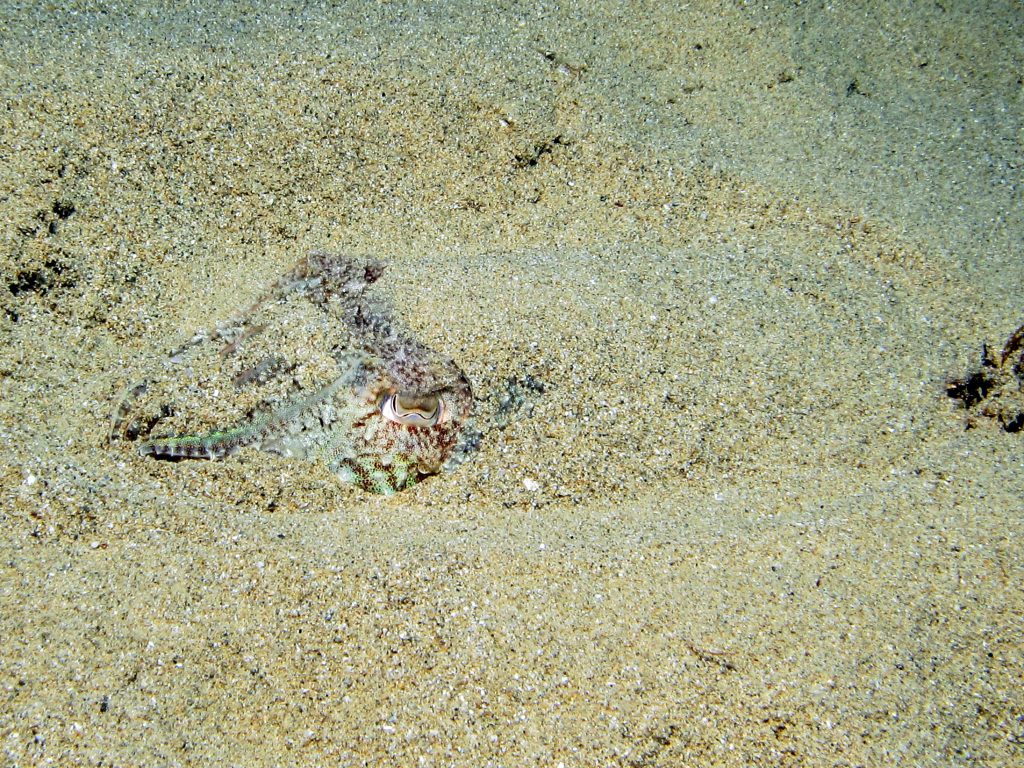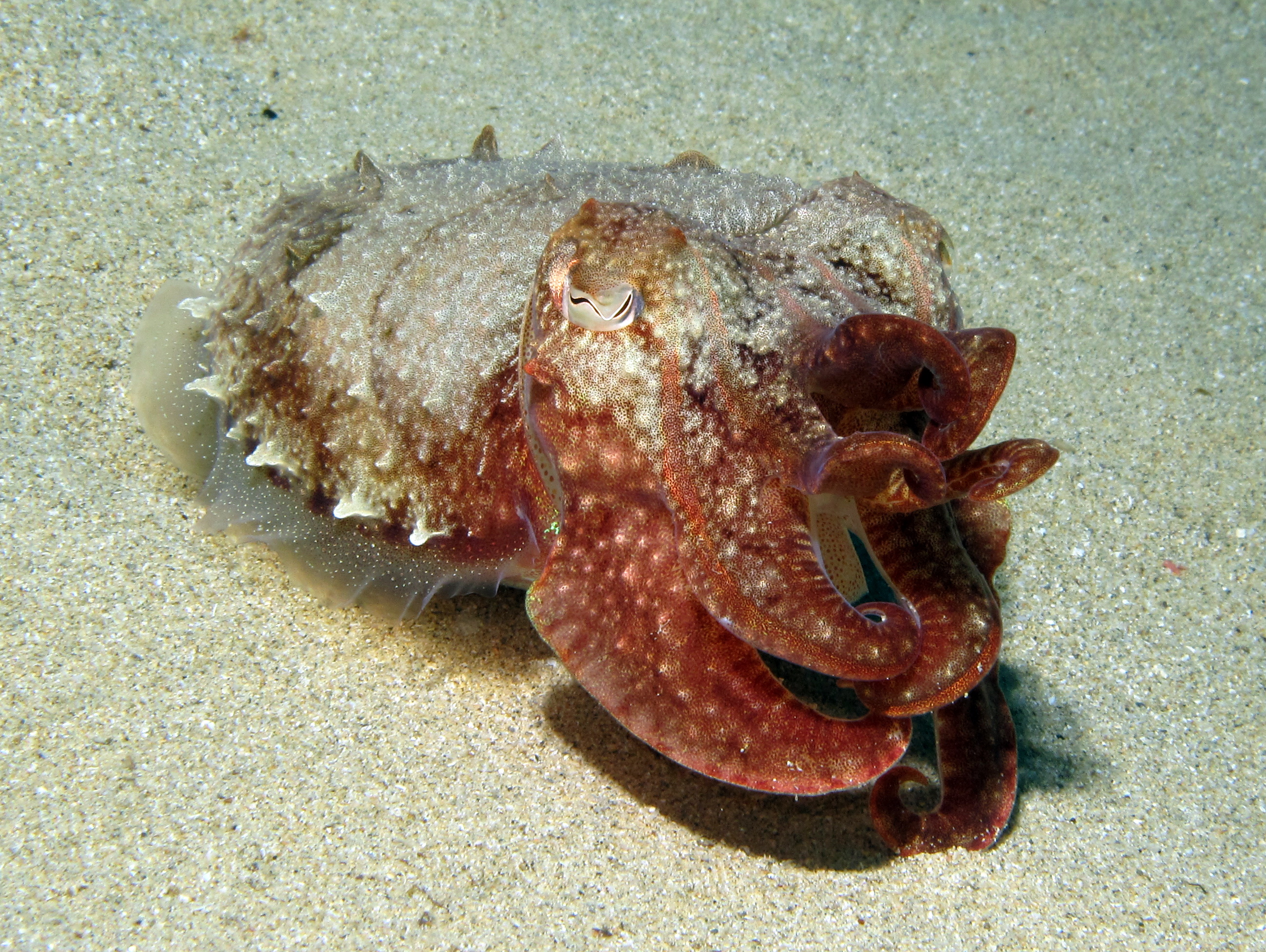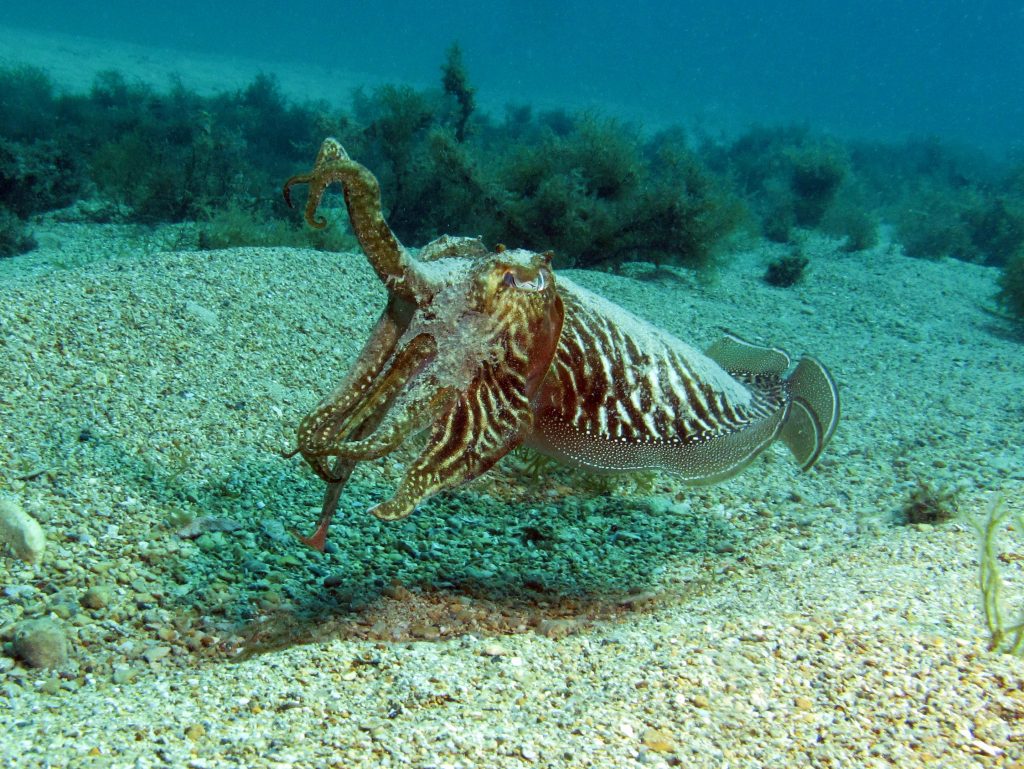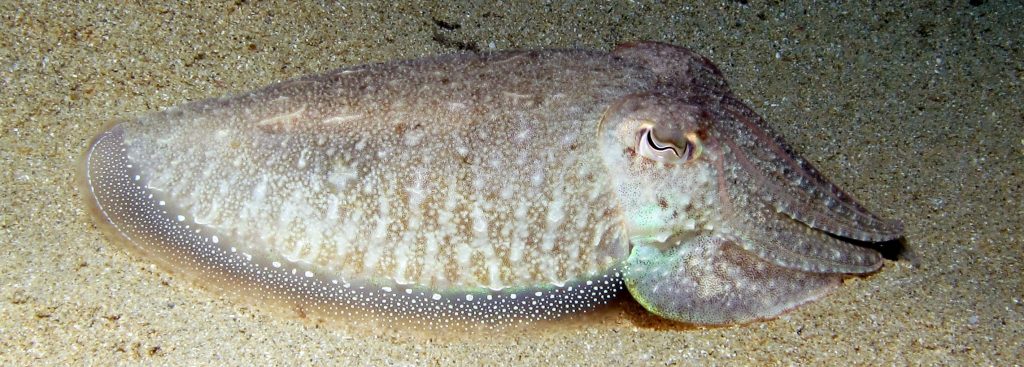Is it true that the Common Cuttlefish is colour-blind?
Common Cuttlefish are well known for their unmatched camouflaging abilities. These abilities are possible due to light scattering leucophores, pigmented chromatophore organs, and structurally reflecting iridophores all located in their skin. These specialized characteristics give them the ability to not only change their colour but also change the texture and appearance of their skin and all of this is done despite them being colour-blind.
Why is the Common Cuttlefish a camouflaging champion?
The camouflaging abilities of the Common Cuttlefish are categorised into four main types including mottle, stipple, uniform, and disruptive. These complex camouflage abilities are not just present in adult cuttlefish, but cuttlefish juveniles also have these complicated characteristics, which allow them to be able to camouflage from a young age.
Where can I see a Common Cuttlefish?
The Common Cuttlefish is native to at least the Mediterranean Sea, North Sea, and Baltic Sea, although subspecies have been proposed as far south as South Africa. It lives on sand and muddy sea-beds, and it can tolerate brackish water conditions. During the day, most cuttlefish can be found buried below the substrate and quite inactive. At night, however, they are actively searching for prey and can ambush them from under the substrate. All the Common Cuttlefish in these photos were seen around Gozo, precisely at Il-Kantra and at Mġarr ix-Xini.
What does the Common Cuttlefish eat?
Cuttlefish are carnivorous and eat a variety of organisms including crustaceans (crabs and shrimp), small fish, molluscs (clams and snails), and sometimes other cuttlefish which is more commonly seen when the abundance of other prey is low. The Common Cuttlefish has two highly developed eyes, eight arms which are located around the mouth and are used to hold and move prey, two tentacles which are used to quickly capture prey, and a radula which is used to tear and rip apart any prey they have captured.
Who is the predator of the Common Cuttlefish?
The Common Cuttlefish only has a lifespan of 1 to 2 years. It has many predators including sharks, dolphins, seals, fish, and cephalopods which includes other cuttlefish. However, ii also has many defensive mechanisms to help protect it from predators including a siphon which it can use to shoot water out of to propel it away from danger, ink which can distract and disorient a predator as the cuttlefish escapes, and of course its camouflage abilities which can help it avoid predators altogether.
When does the Common Cuttlefish breed?
Common Cuttlefish reach sexual maturity between 14 and 18 months of age. During breeding season, which occurs during spring and summer in shallow waters, male cuttlefish will display a black and white zebra pattern on their mantle to attract females. Females will display a uniform grey colour to indicate they are ready to mate. Cuttlefish are internal fertilisers, and the number of fertilized eggs can range from 100 to 1000. After the eggs are fertilised, they will remain in the oviduct of the female for anywhere between 30 and 90 days before they are laid. The eggs attach to seaweed, shells, or other substrates to prevent them from drifting away and have ink deposits on them to aid in camouflage.

